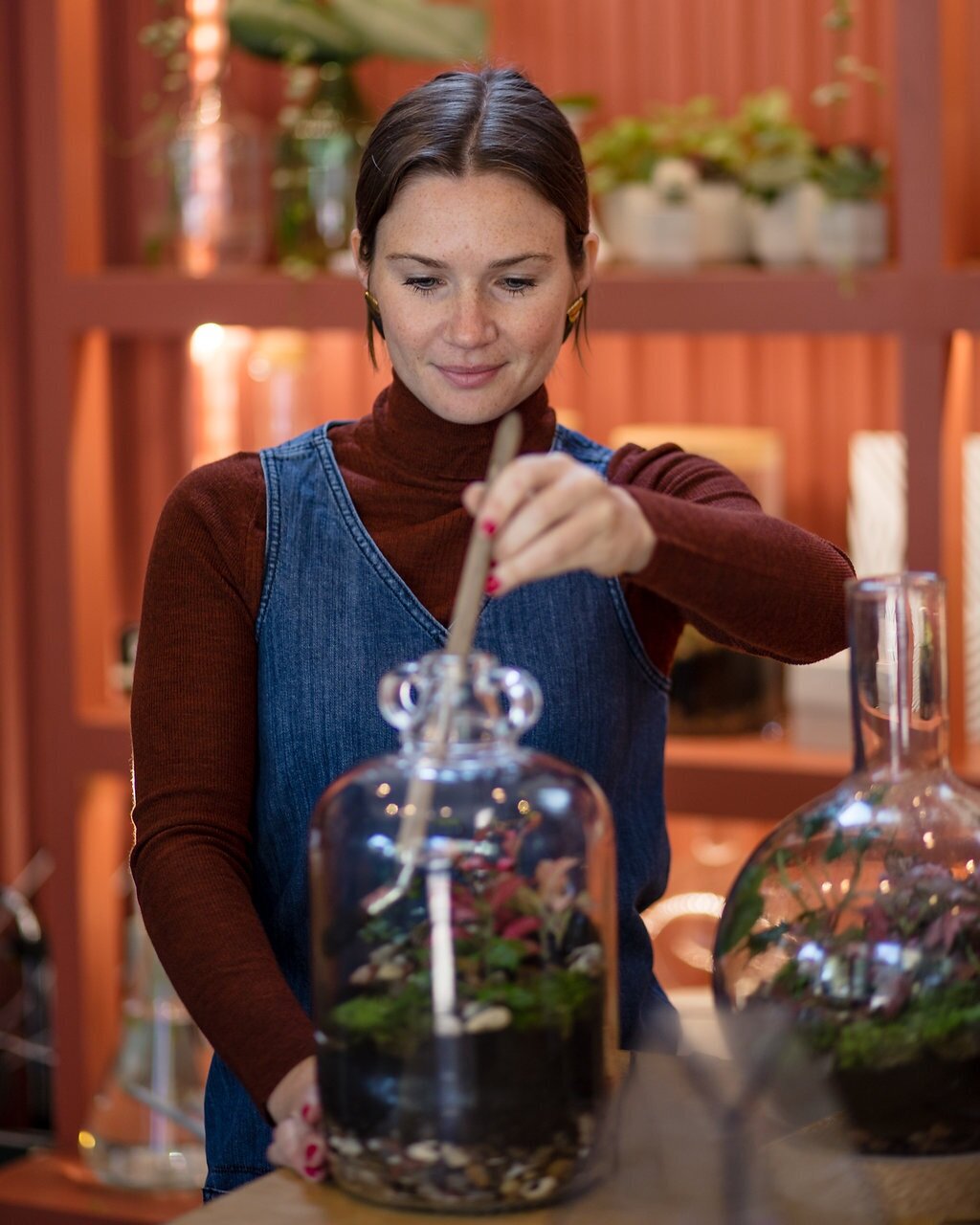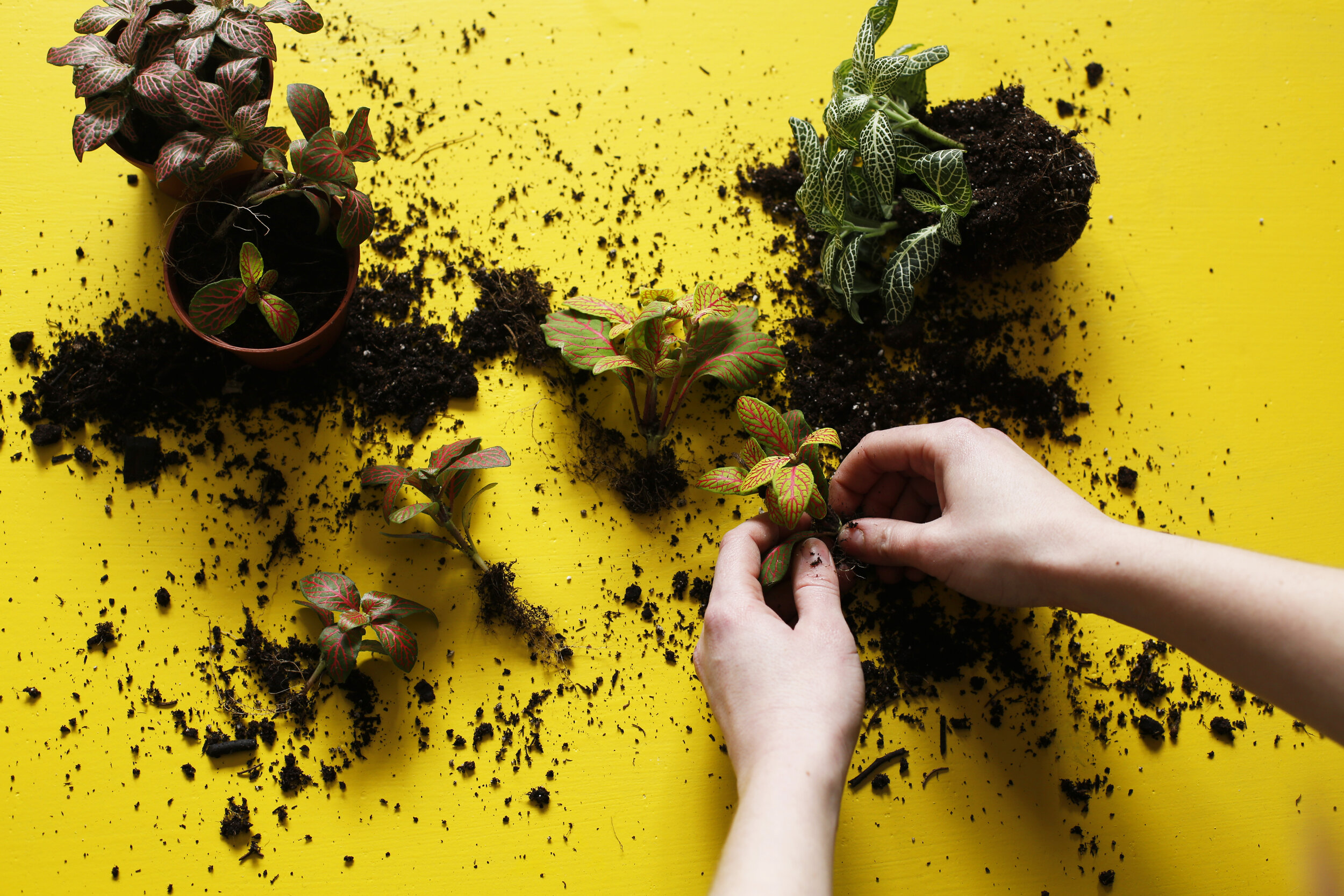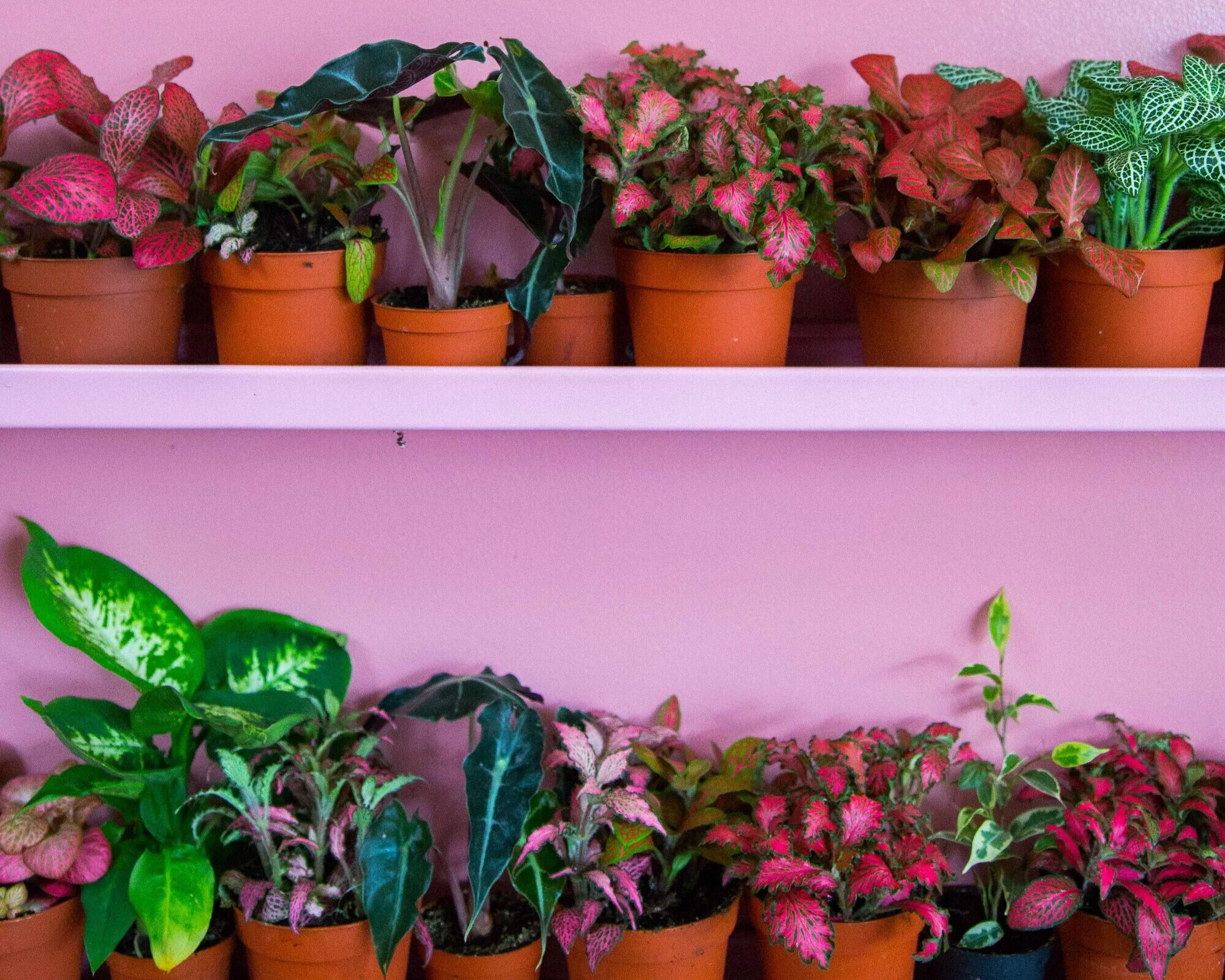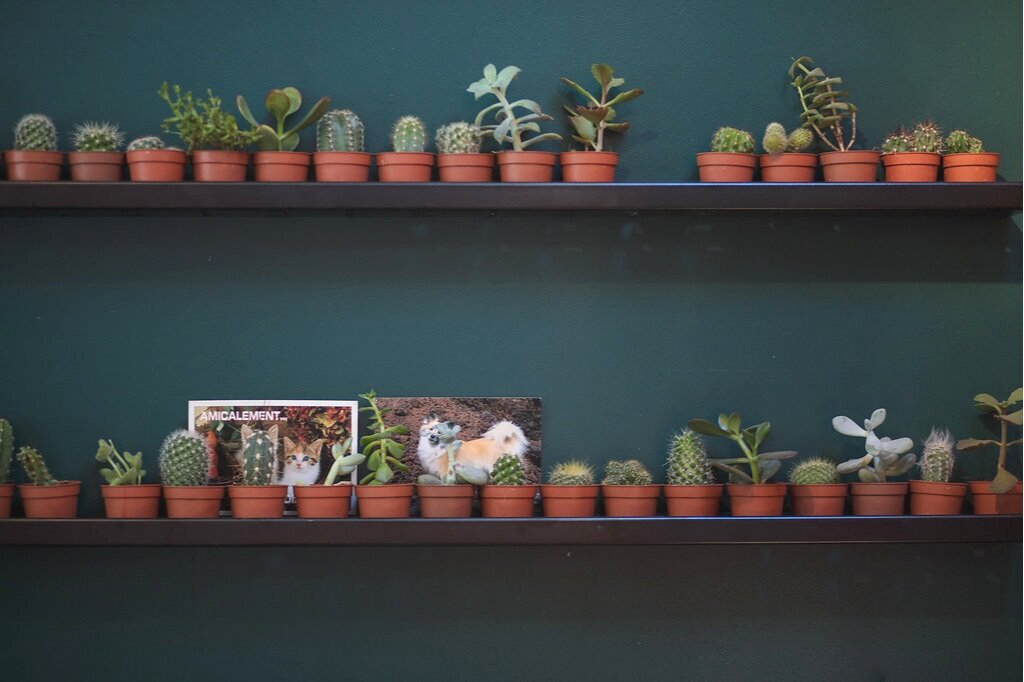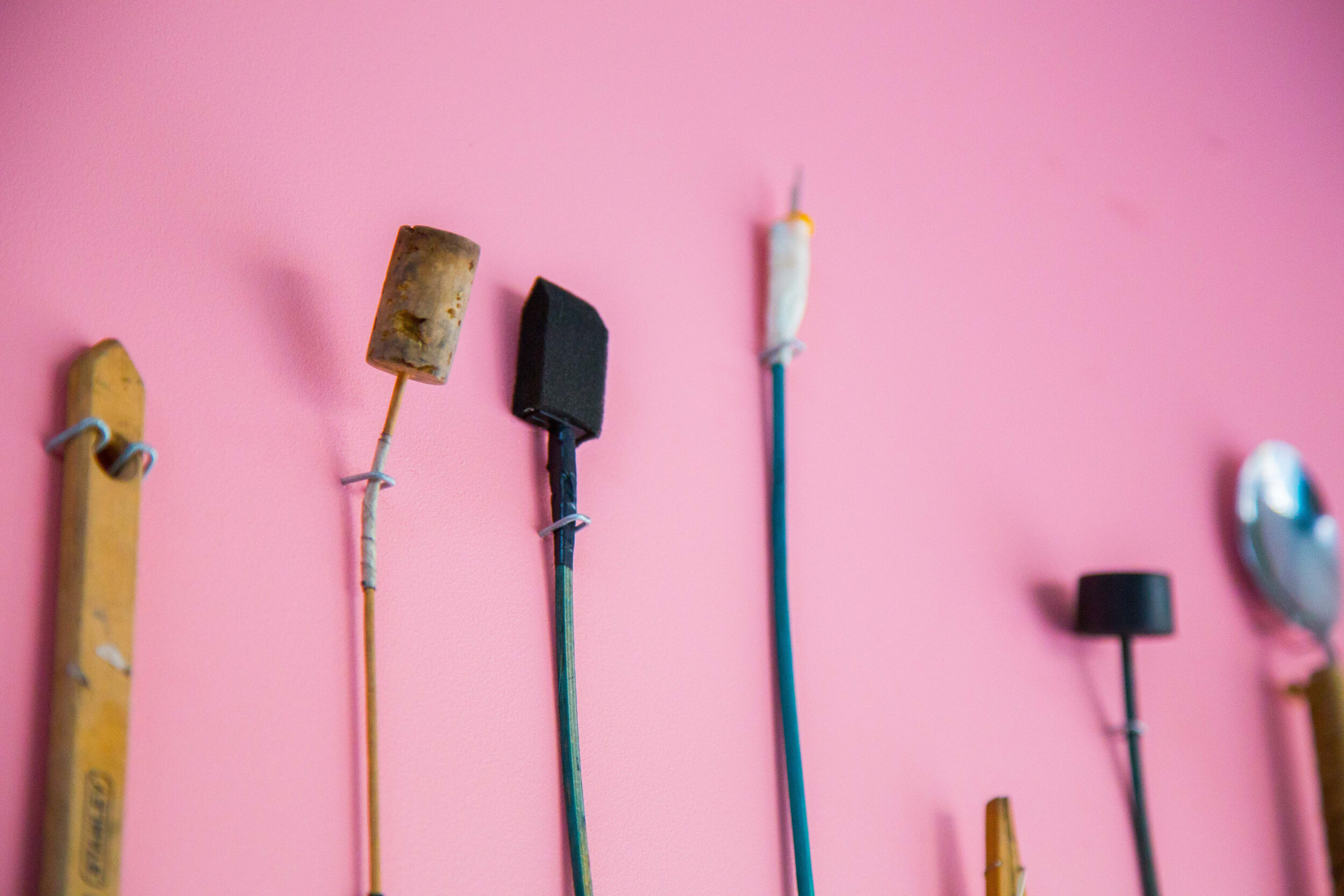Expert advice on choosing plants, terrarium care and design tips
London Terrariums, photo by Theo Deproost, Styling by Charlie Murray
Terrariums are an intriguing and fuss free way to appreciate plants without the need for much space or time to care for them. Now-a-days terrariums come in many sizes and forms, but they have been around a lot longer than you may think, since the late 1800s in fact. They saw a boom in popularity in the 1970s in conjunction with the rise in houseplant appreciation, and of course, they have been having another resurgence in popularity in recent years.
Read on for an in-depth look at plants within terrariums; which one’s work, which one’s don’t, design considerations for building your own terrariums, and of course terrarium care tips!
Emma Sibley, London Terrariums, photo by Jutta Klee Photography for Wrap London
We are proud to have been working with industry leaders London Terrariums since Green Rooms Market began. Founded by Emma Sibley back in 2014 with a love of gardening but a lack of space, Emma turned her love of terrariums into a business teaching others how to make these wonderful mini eco-systems, and now sells and teaches from her London shops.
Below Emma shares her incredible knowledge and insider tips with us.
What are the essential components to a healthy terrarium?
Good drainage - All terrariums need a good drainage layer; this could be a layer of stones or gravel that should be thoroughly washed before put in the glass
Activated Charcoal - On top of the stones there should be a layer of activated Charcoal, the charcoal acts as a water filter in the terrarium, filtering out any impurities and toxins in the water as it passes through, helping to stop the build-up of mould or algae in the terrarium. We use a powder as it has a very large surface area for a very small volume, just sprinkle a thin layer over the top of the stones, ensuring you clean any off the sides of the glass before the next step.
A peat free, free-draining compost - a houseplant compost will be fine, if it feels quite dense you can add a few handfuls of perlite to loosen the mixture up. If you have old compost, it can be a good idea to sterilise it first in the oven to kill off any bacteria.
Healthy plants and moss- you want to use the freshest and healthiest plants and moss in your terrariums, take off any sad or crispy leaves or stems.
Dividing Fittonia prior to planting, London Terrariums
What qualities make a good closed terrarium plant?
The main feature of a closed terrarium is the self-sustaining element, when a terrarium is closed, a high humidity is created very much emulating the conditions found in a tropical rainforest. This is very important to bear in mind when building your closed terrarium as you will need to select plants that will thrive in these damp and humid environments.
Closed Terrarium plants, London Terrariums
Specific plant recommendations for closed terrariums
1. Fittonia - these are your ‘go to’ terrarium plants, native to the Peruvian jungle you will find these beauties creeping along the floor under the canopy of the taller plants and trees meaning they thrive in damp and humid conditions and a very tolerant of low light and shade. Also know as the nerves plant due to the highly decorative lines on the leaves which look like nerves.
2. Korean Rock Fern - Perfect little terrarium Ferns, they stay quite small and look great as a centrepiece in terrarium.
3. Ficus Ginseng Bonsai - These are a favourite in our larger terrariums, the small little Ficus trees will thrive in a closed terrarium, leaf shedding is common but these can just be removed or left to decompose into the compost.
4. Muehlenbeckia - A climbing plant with small button shaped leaves, compliments the other smaller plants as this will grow winding around your terrarium, although you may need to trim to ensure it doesn’t take over.
5. Moss, our favourite! Cushion or Bun Moss - Moss will be the finishing touch to your terrarium, we love bun moss for its dense mounds, it can be used to replicate small hills and create depth in your terrarium. Although, if you have moss on your garden shed or walls these little sections are also amazing for putting in your closed terrarium as you never quite know what will grow out of it!
Moss, London Terrariums
What qualities make a good open terrarium plant?
In an open terrarium you will often find Cacti and Succulent plants. As open terrariums do not have a self-sustaining element you will need to water these terrariums as you would water your usual Cacti and Succulent plants. You will often see decorative stones and sand and also reindeer moss in open terrariums as these will compliment the desert plants used.
Cacti & Succulents for open terrariums
Specific plant recommendations for open terrariums
1. Fence post Cacti - these guys are great for creating height in your open terrariums, you may have to use a pair of tweezers to get them in and also make sure you pat the compost down well around the bottom when planting as these Cacti will often have a very small rootball and may well topple over
2. Crassula ovata - The Jade plant makes a perfect plant for an open terrarium, enjoying a dry compost with plenty of air circulation it may grow quite quickly but can be trained by pruning the stems to grow either taller or wider.
3. Aloe - All Aloes will be very happy in an open terrarium, they are very slow growing and look great grouped together, enjoying bright but not direct sun and minimal water as this is all stored in their leaves.
4. Preserved Reindeer Moss - The only moss that will really be happy in an open terrarium is Reindeer moss, confusingly this is actually not a moss but a lichen, which is probably why it thrives so well in open and dry environments. This will not need to be planted as such, just place it on top of compost or sand when you are almost done as a finishing touch to your terrarium.
Are there plants that are not suited to terrariums at all, and why?
We have found a few that do not work along the way, mostly through experimentation.
1. Pilea peperomioides - although some members of the Peperomia family will be happy in a terrarium we have found the Chinese money plant to quickly turn brown inside a closed terrarium, it does not do well with the increased humidity.
2. Ficus elastica - this may sound obvious due the size of Rubber plants that you would usually see in stores, but we came across the smallest rubber plants once and tried them in a closed terrarium, the leaves quickly fell off and went rotten. Which makes perfect sense when you know how the rubber tree can suffer with over watering.
3. Ficus pumila - this is an interesting one as we have used it in our terrariums quite a bit, maybe it shouldn’t be in plants ’never’ to be used in a terrarium but we have found it struggles with the intense humidity and will quite often form a white fluff or mould around the leaves.
Is there an optimum number of plants or optimum mix of species for a healthy and good-looking terrarium?
We always say less is more, some of the most beautiful terrariums we have made, and have seen made, have just had one plant in and lots of moss! I would just say don’t over-fill your terrariums, even if you want a real jungle vibe then remember that the plants will all grow and watching them grow into the space is part of the beauty and what we love about them.
Closed Terrarium plants, London Terrariums
What makes a good terrarium vessel?
You want to find the clearest glass you can, green glass won’t work very well and neither will a mottled glass, firstly because it will stop the plants getting optimum light but secondly it will stop you being able to see everything inside! The type of vessels also depends on how adventurous you are feeling, a wide opening in things like sweet jars and clip-top kilner jars are great as you are able to get your hands inside to plant, however it is also really rewarding planting up something like a Demijohn or Apothecary bottle that has a narrow opening, you will then have your friends asking ‘how on earth did you get those plants in there!’
Terrarium vessels, London Terrariums
What aesthetic or design considerations do you make when creating your terrariums?
Firstly we decide if we are going to have a direct viewing angle to the terrarium, will this one have a front / back or will it be able to be viewed from all angles.
If we want a front and a back then we tend to create a slope with the compost, this also gives us a greater surface area to plant in.
If we want the terrarium to be viewed from every angle then we will usually pat the compost flat.
In terms of planting, we all have our own styles, but everyone just starts planting where they feel will work, there isn’t a rule of planting from the middle out or vice versa, usually we have a plant in our hand and pop it where it will look the best. It is always good to try and create varying heights in your terrarium using taller plants near the back and the lower ones at the front or around the edges but sometimes even the terrariums that are really flat, just using moss and Fittonia look so nice!
After the planting it is time for the moss and then any decorative stones. Always place the stones last otherwise they will just roll into the holes that you make for the plants and moss which is really frustrating!
Globe terrariums by London Terrariums
Are there unusual plants or substrates that can be used in terrariums for a different look?
Orchids work amazingly in terrariums, I think because they are quite fussy and actually don’t like to be bothered, but this is also something that needs special consideration. Miniature Jewel Orchids (Phalaenopsis and Masdevallia) are the best ones to start with they will handle the humidity well and cope with the lower light conditions. One thing we would say is although these orchids enjoy the humidity they also need a lot of air circulation, so we suggest using a large fish tank style terrarium or alternatively you can use a sweet jar style vessel and just keep the jar open. The substrate used for orchids should be very well draining, you can use a layer of stones on the bottom of your jar and then even some shells (we suggest Shell on Earth) to create extra drainage and then choose a compost with added perlite.
What are your top terrarium care tips?
1. Never put your terrarium in any direct sun or heat, keep away from radiators or heated floors, as well as south facing windows and conservatories, but saying that you must make sure your terrarium is in a bright room, with access to natural light, too little sun and mould may start to develop.
2. If you notice a lot of condensation on the glass you can always open the cork and let the terrarium dry out for a few hours or a day. Once the condensation has cleared you can pop the cork back on.
3. After a few years you will notice that the plants may be starting to outgrow your terrarium, you can either take the cork off and let the plants grow out or alternatively you can use a long pair of scissors and tweezers to trim and take out any plants
4. If you notice any leaves falling from the plants or a plant dies, you are usually fine to keep the plants in there, and they will just die back, however if you ever start to notice any mould in the terrarium its a good idea to get it out.
5. Most importantly you should not need to water your terrarium, as long as you see even the smallest amount of condensation in the vessel there is no need to water. Overwatering is a common cause of terrarium death.
6. At any point throughout your terrarium’s life you can replace and add new plants, try not to tamper with it too often but having a patter and a pair of tweezers on hand for minor adjustments is very handy!
Terrarium tools, London Terrariums
What are the common mistakes that people make when caring for terrariums?
TOO MUCH LOVE! Aha the most common mistake in having a closed terrarium is overwatering, we always say ‘when in doubt, do not water’. If you are worried that your terrarium is a little dry you can try using a mister to spray a few sprays of water, never go in with a watering can!
Also leaving in direct sun can cause a quick demise of the plants in your terrarium, the glass acts a magnifying glass, increasing the possibility of burnt and wilting plants.
Recommended retailers for terrarium planting and care
Terrarium Kits and workshops
London Terrariums are of course our go-to for DIY Kits and In-person or Virtual Workshops
How about a special gift for Mother’s Day, this at-home kit with virtual workshop even includes some prosecco to make them feel extra special.
Terrarium plants
London Terrariums sell plants from their shops due to reopen after 12th April (Locations and opening times are listed here)
Spiralis have a great section on their website dedicated to terrarium plants.
In-Tray also have a good selection of mini plants, many of which will work well in terrariums.
Terrarium soil
Soil Ninja do a terrarium specific soil mix.
Terrarium tools and sundries
London Terrariums sell tools, activated charcoal and decorative stones.
Shell on Earth’s crushed whelk shells make for the perfect drainage or decoration
We hope this has inspired you to get growing under glass.
For lots more planty knowledge, tips and industry insights take a look at our other blogs


